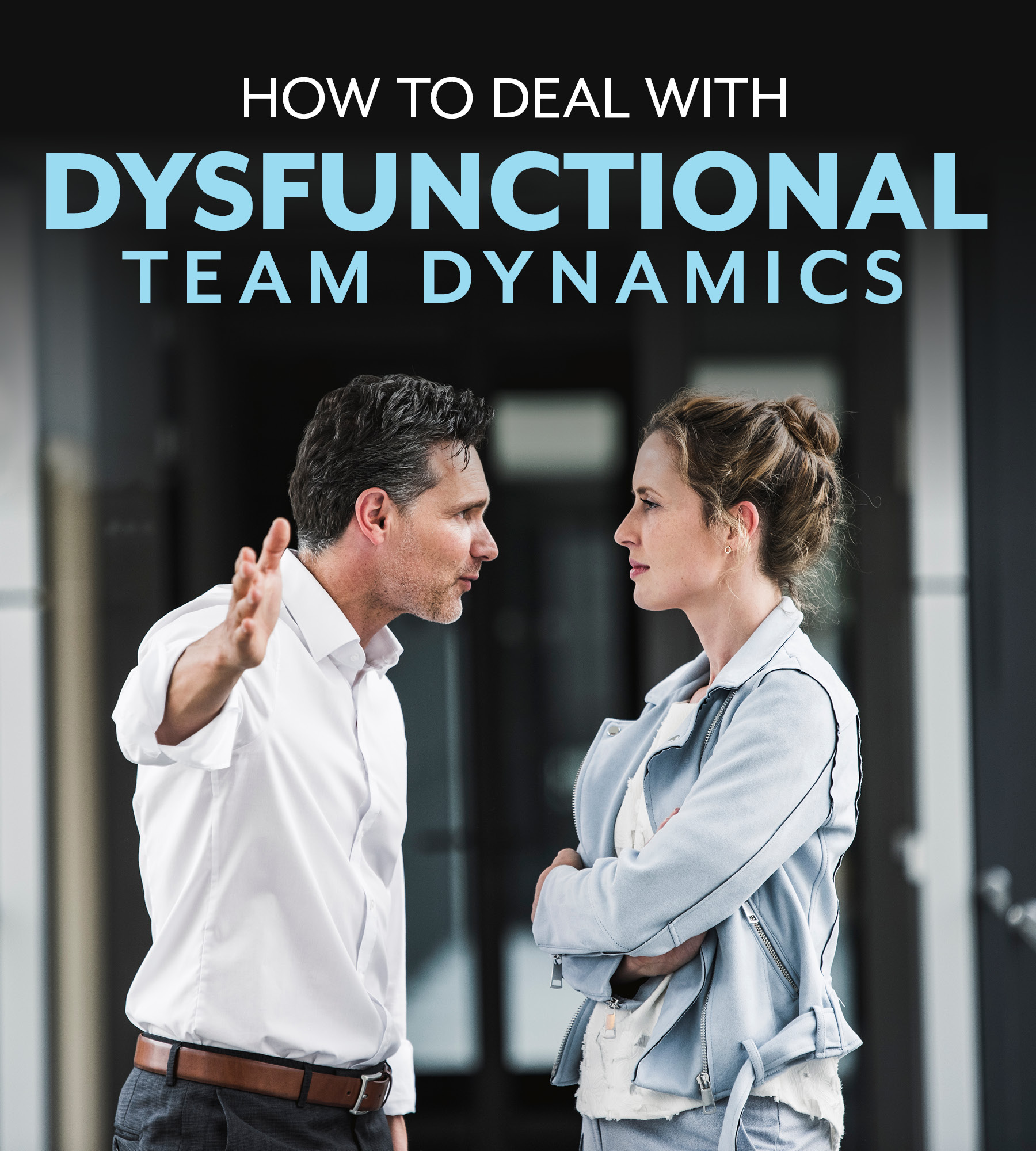Language
You can read the magazine in one of the following languages
Whether we like it or not, all teams have the potential to become dysfunctional. Why? Because they are made up of fallible, perfectly imperfect human beings – like you and me.
And while each of us knows that working together and pulling in the same direction would help us accelerate progress and lift performance with less effort, making it happen can feel impossible.
This is because the ways we work together are rarely logical. Our diverse personalities, values, life experiences, skills, job demands and hopes make our relationships at work complex.
Add to this the ever-changing environment in which we live and work, and even small changes such as an increased performance goal, a shortened deadline or variations to your team, can dramatically increase the perceived risks we experience.
The critical term to understand here is ‘perceived risks’. Researchers have found that as we interact with others, our brains gather and interpret people’s facial expressions, body movements and language on an almost minute-to-minute basis, so as to try to understand their intentions and motivations in order to predict their future behaviors.
This ‘mind-reading’ ability is designed to enhance social connections and avoid the pain of social rejection quickly and automatically; it allows us to cooperate with people we trust, avoid those we don’t and to track our reputation in the eyes of others.

When it comes to accurately predicting if someone is lying or telling the truth, our judgments tend to be no more reliable than flipping a coin.
The difficulty is that people tend to overestimate their mind-reading abilities, which often leads to social friction, contributes to dysfunctional dynamics and undermines psychological safety in relationships. For example, if asked to predict how much different colleagues like us, our efforts are likely to be little better than random guesses.
Similarly, when it comes to accurately predicting if someone is lying or telling the truth, our judgments tend to be no more reliable than flipping a coin. And yet how much drama is created – and as a consequence how well we work together – greatly depends on these snap judgments. And while drama may be the ‘loudest’ symptom of dysfunction, it has a quiet colleague that is equally powerful.
Have you experienced moments at work when saying nothing feels like the safest choice? Yup, me too. What is it about speaking up at work that makes it feel so hard?
The uncomfortable truth is that we are wired for avoidance and have a natural aversion to mistakes, failures and the feelings of shame and embarrassment that can come with them. There is a cost to these experiences that simply doesn’t exist if we maintain silence.
This hardwired aversion is often reinforced through cultural norms that create a climate of ‘artificial harmony’, whereby our desire to maintain civil working relationships means we are reluctant to share our perspective, disagree or be vulnerable. The problem is this also makes us less willing to admit mistakes, acknowledge weaknesses or ask for help.

Silence means that our collective wisdom and learning are not being harnessed to help us navigate the future more effectively.
All of this means that speaking up feels risky and silence feels like the safer bet, because in the moment, silence seems cost-free. The challenge is it carries a significant hidden cost.
When people stop talking, they stop sharing their ideas, thoughts, questions or concerns. They stop sharing the challenges they see coming and the opportunities ahead. Silence means that our collective wisdom and learning are not being harnessed to help us navigate the future more effectively.
And it means dysfunctional team dynamics continue, unresolved. The reality is we cannot address what remains unspoken, unacknowledged and beneath the surface.
If our teams feel that silence is cost-free and speaking up is risky, our role as leaders is to create a climate where we flip this equation. One way to do this is by holding space and inviting conversations that encourage connection, allow for shared meaning to emerge and create psychological safety in the team.
Asking team members to share their experience in the team of the following five questions is a good starting point, as they speak to the specific perceived ‘threats’ that can create drama dynamics:
• Is it safe to mess up, slip up and learn?
• Is it safe to succeed and grow?
• Is it safe to share weaknesses?
• Is it safe to shine in strengths?
• Is it safe to be authentically me?
Dysfunctional team dynamics are grounded in fear-based responses to perceived risks. Building psychological safety is the antidote, but it is not a quick fix. It takes effort, attention and energy, requires nurturing, nourishment and nutrients, and it may take time to bear fruit.

Paige Williams
Contributor Collective Member
Paige Williams is a keynote speaker, organizational psychologist and Honorary Fellow at the University of Melbourne. A world leader in positive psychology and the author of five books on leading well in modern times, Paige is obsessed with one question above all others: ‘What does good look like?’. For more information visit https://drpaige.au/
